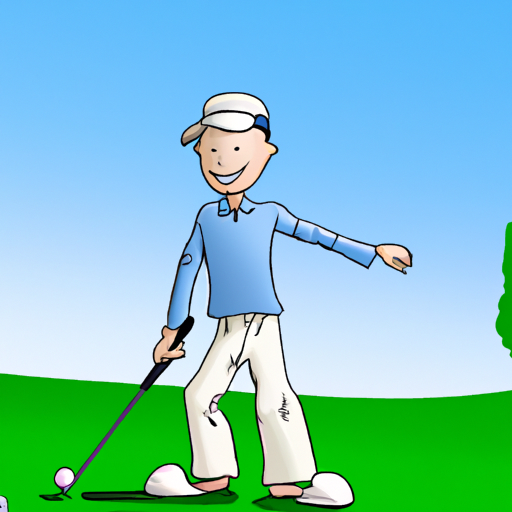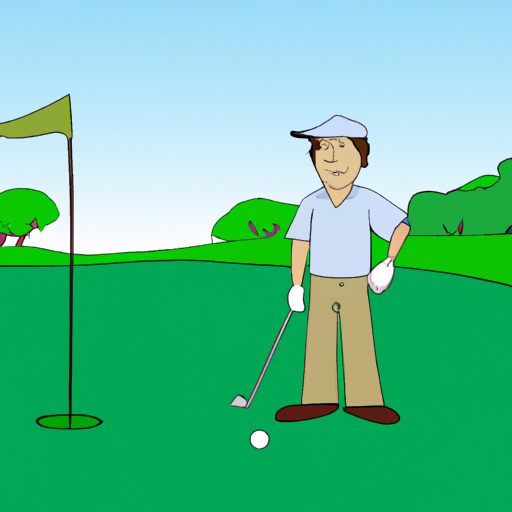- Home
- Golf Swing
- Connected Golf Swing
Mastering the Art of the Connected Golf Swing: A Comprehensive Guide
Are you tired of inconsistent shots and high scores? Do you dream of hitting long, straight drives that leave your buddies in awe? If so, the connected golf swing could be the game-changer you've been looking for.
Imagine stepping up to the tee with confidence, knowing that you have a secret weapon in your golfing arsenal. That's what the connected golf swing can offer. It's a technique that synchronizes your body and arms, resulting in powerful, accurate shots.
But it's not just about power and accuracy. The connected golf swing can also bring consistency to your game, helping you to lower your scores and impress your buddies. It's a technique that's accessible to golfers of all skill levels, and with some practice, it can transform your game.
So, are you ready to take your golf game to the next level? Are you ready to experience the power and consistency that a connected golf swing can bring?
If so, keep reading.
This comprehensive guide will introduce you to the connected golf swing, helping you to understand its importance, common mistakes, and how to achieve it. It's time to unleash your potential and transform your golf game.
 Practice makes perfect - a golfer working on his connected swing.
Practice makes perfect - a golfer working on his connected swing.Embracing the Connected Golf Swing
The world of golf is filled with numerous techniques and strategies, all aimed at improving your game. One such technique that has gained significant attention is the "connected golf swing".
But what exactly is a connected golf swing, and why is it so important?
A connected golf swing is when your arms flow in harmony with the rotation of your body. It's like a well-rehearsed dance where every part of your body knows its role and moves in sync to create a beautiful, powerful swing. This synchronization between your body and hands is key to hitting the ball accurately and with power.
This concept of a connected swing is not new, but it has gained prominence in recent years as more golfers and instructors recognize its benefits. It's a technique that can be applied by golfers of all skill levels, from beginners to professionals.
And the best part?
It's not as complicated as it sounds. With some understanding and practice, anyone can incorporate a connected swing into their game.
But there’s more. So read on.
The Importance of a Connected Golf Swing
Why does a connected golf swing matter?
Several reasons, not all of which are obvious.
A well-connected golf swing contributes significantly to the power and control you have over your shots. It allows for a smoother transfer of energy from your body to the club, resulting in longer and straighter shots.
Moreover, a connected swing plays a crucial role during the downswing and follow-through. It ensures that your body, arms, and club move as a single unit, reducing the chances of mis-hits and improving consistency.
But the benefits of a connected swing extend beyond just power and consistency. It also contributes to better balance and stability during the swing, reducing the risk of injuries. It can also help improve your timing and rhythm, two crucial elements of a good golf swing.
Isn't that exciting? But I didn’t stop there. Let's delve into some common issues golfers face when trying to achieve a connected swing.
Common Mistakes in Achieving a Connected Swing
Achieving a connected swing is not without its challenges. Many golfers struggle with disconnecting their arms from their body during the swing. This often leads to inconsistent shots and can even cause strain or injury.
Another common issue is the tendency to focus too much on the arms and neglect the role of the body. Remember, a connected swing is all about harmony and synchronization between all parts of your body.
Some golfers also struggle with the timing of their swing. They either rush their downswing or delay it, resulting in a disconnected swing. It's crucial to maintain a steady rhythm throughout your swing to ensure a good connection.
Are you ready to get started on improving your swing? Let's look at how to achieve a connected golf swing.
Achieving a Connected Golf Swing
Achieving a connected golf swing requires practice and understanding of your body's movements. Here are some steps to guide you:
1. Understand the Role of Your Body: Your body's rotation is the driving force behind your swing. Ensure your torso and hips are rotating effectively during your swing.
2. Sync Your Arms with Your Body: Your arms should move in harmony with your body's rotation. Avoid letting your arms get ahead or lag behind your body's movement.
3. Practice Drills: There are several drills designed to improve connection in your swing. Practice these regularly to reinforce the right movements.
Remember, achieving a connected swing is not an overnight process. It requires patience and consistent practice. But with time, you'll start to see improvements in your swing and your overall game.
But there’s more. How about some specific drills and exercises to help you improve your connected swing?
Drills and Exercises for a Connected Swing
Practicing specific drills can significantly improve your connected swing. Here are a few to get you started:
1. The Towel Drill: This drill involves placing a towel under both armpits and making swings without dropping the towel. It encourages a more connected swing by keeping your arms and body in sync.
2. The Headcover Drill: Similar to the towel drill, this involves placing a headcover or glove under your armpits and making swings.
These drills not only help improve your connection but also provide immediate feedback. If the towel or headcover falls during your swing, it's a sign that your arms and body are not moving in sync.
Remember, consistent practice is key to seeing improvements. Now, let's look at how a connected swing can transform your game.
 A golfer perfecting his connected golf swing.
A golfer perfecting his connected golf swing.The Impact of a Connected Swing on Your Game
A connected swing can have a profound impact on your golf game. It can help lower your scores and improve your overall performance. By ensuring your body and arms move in unison, you can achieve more consistent and powerful shots.
Moreover, a connected swing can help you hit longer and straighter drives, something every golfer strives for. It can also improve your shot accuracy, making it easier to hit targets and avoid hazards.
But the benefits of a connected swing extend beyond just your performance on the course. It can also boost your confidence and enjoyment of the game. When you see your shots flying straight and long, it's a great feeling that makes all the practice worth it.
Key Takeaways
1. A connected golf swing involves your arms flowing in harmony with your body's rotation.
2. Achieving a connected swing can improve your power, control, and consistency.
3. Avoid common mistakes like disconnecting your arms from your body and neglecting your body's role.
4. Practice drills like the towel drill and headcover drill to improve your connected swing.
5. A connected swing can lower your scores and enhance your overall performance.
Isn't that cool? After all, you’re ready for success finally, aren’t you? So, go out there, practice your connected swing, and watch as your golf game transforms!
FAQ about Connected Golf Swing
What is a connected golf swing?
What is a connected golf swing?
A connected golf swing refers to the synchronization of your body, arms, and hands during the swing. This means that when you swing your golf club, your arms move as one with your body, enhancing the power and control of your shots.
How do you stay connected in the golf downswing?
How do you stay connected in the golf downswing?
Staying connected in the golf downswing involves maintaining the relationship between your arms and body. This can be achieved by ensuring that your hands stay in front of your body throughout the swing, a concept often referred to as being 'connected'. This technique increases power and control in your shots.
How do you keep your arms and body connected in the golf swing?
How do you keep your arms and body connected in the golf swing?
Keeping your arms and body connected in the golf swing involves swinging your hands, arms, and upper torso together as one unit instead of separately. Imagine the golf swing as a clock face, with your arms and body moving in sync.
How do you sync arms and hips in golf?
How do you sync arms and hips in golf?
Syncing your arms and hips in golf involves coordinating the movement of your upper and lower body. As you initiate your downswing, your hips should start to rotate towards the target. Your arms should follow this movement, maintaining a close connection to your body.
How do you sync your golf swing?
How do you sync your golf swing?
Syncing your golf swing involves ensuring that all parts of your body - your arms, hips, and torso - move in harmony throughout the swing. This can be achieved by practicing a smooth, rhythmic swing where each part of your body contributes to the motion without overpowering the others.
What does it mean to have your arms connected to your chest in the golf swing?
What does it mean to have your arms connected to your chest in the golf swing?
Having your arms connected to your chest in the golf swing means that your arms move in harmony with your chest or torso during the swing. This connection helps to maintain a consistent swing plane and promotes better control and accuracy.
What is a disconnected golf swing?
What is a disconnected golf swing?
A disconnected golf swing refers to a swing where the arms and body move independently of each other. This lack of synchronization can lead to inconsistent shots and a loss of power and control.











